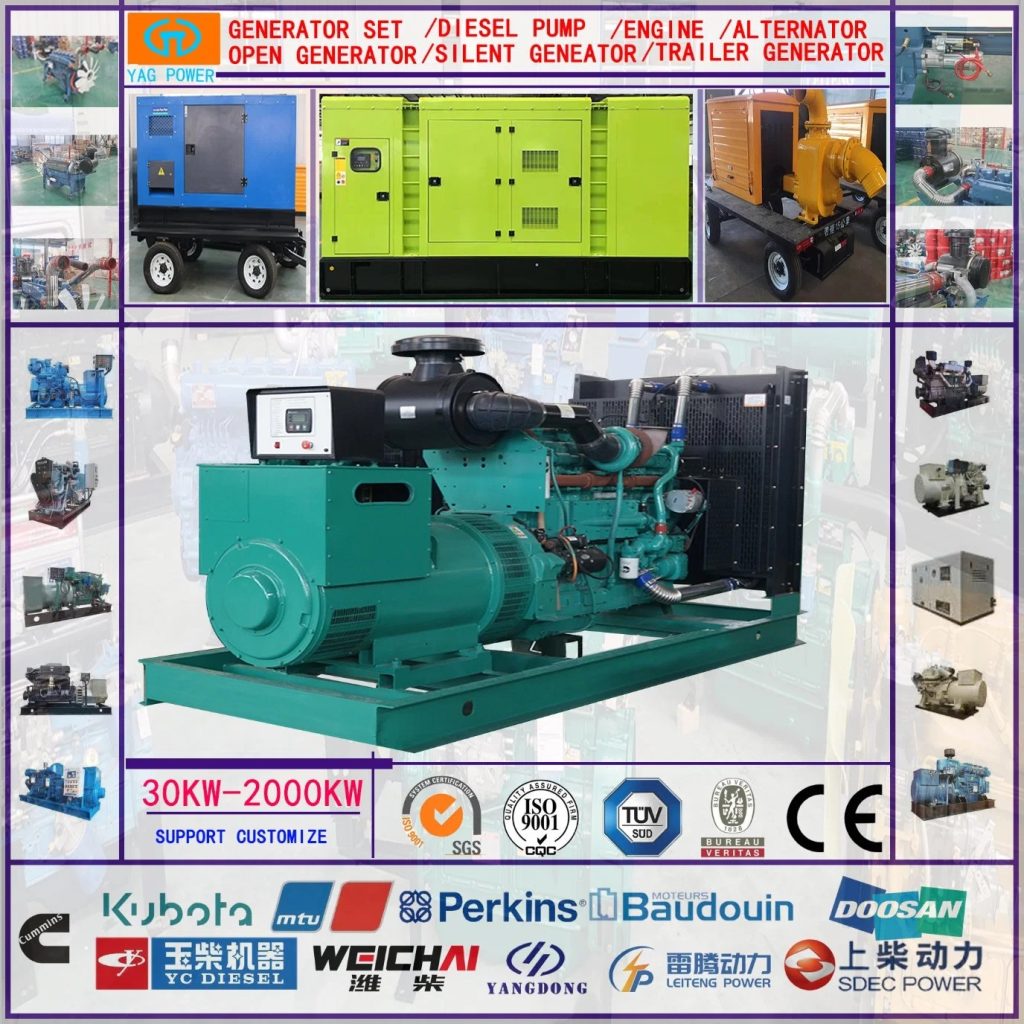Introduction:
In today's world, noise pollution has become a growing concern, with adverse effects on human health and the environment. Among the many sources of noise pollution, diesel generators are often significant contributors. These powerful machines provide a reliable source of electricity in a variety of applications, but their operation can result in high noise levels. To mitigate the impact of diesel generator noise, noise monitoring systems have become essential. This article aims to provide a comprehensive guide to diesel generators for noise monitoring, exploring their importance, components, operation, and benefits.
1. Understanding Diesel Generators:
1.1. Definition and Function:
Diesel generators are mechanical devices that convert mechanical energy into electrical energy through the combustion of diesel fuel. They consist of an engine, an alternator, a fuel system, a cooling system, and an exhaust system. Diesel generators are widely used in various sectors, including construction, healthcare, manufacturing, and events, to ensure uninterrupted power supply.
1.2. Noise Generation:
The operation of diesel generators produces noise due to multiple factors, including the combustion process, mechanical vibrations, and the exhaust system. The noise levels generated by these machines can range from 70 to 110 decibels (dB), depending on the generator's size, capacity, and condition. Such high noise levels can lead to environmental disturbances, hearing impairment, and reduced quality of life for individuals living or working in the vicinity.
2. Importance of Noise Monitoring:
2.1. Environmental Regulations:
Governments and regulatory bodies worldwide have recognized the detrimental effects of excessive noise pollution on human health and the environment. Consequently, they have implemented stringent regulations to control and limit noise emissions from various sources, including diesel generators. Noise monitoring plays a crucial role in ensuring compliance with these regulations and preventing potential penalties or legal consequences.

2.2. Health and Safety:
Occupational safety and health regulations also impose noise exposure limits to protect workers from the harmful effects of excessive noise. Monitoring diesel generator noise levels in workplaces helps identify areas where noise exceeds acceptable limits, enabling appropriate measures to be taken to protect workers' hearing health and overall well-being.
2.3. Community Relations:
In scenarios where diesel generators are used in residential or commercial areas, excessive noise can strain community relations. Monitoring the noise levels and taking necessary measures to reduce noise emissions demonstrates a commitment to environmental responsibility and community welfare.
3. Components of a Noise Monitoring System:
3.1. Sound Level Meters:
Sound level meters are the primary devices used to measure noise. These handheld instruments detect sound pressure levels (SPL) in decibels and provide real-time data. Modern sound level meters are equipped with digital displays, data logging capabilities, and other advanced features for accurate and convenient noise monitoring.
3.2. Microphones:
Microphones are essential components of a noise monitoring system, as they capture sound waves and convert them into electrical signals. Different types of microphones, such as condenser microphones and piezoelectric microphones, are used based on the specific monitoring requirements.
3.3. Data Loggers:
Data loggers are devices used to record noise levels continuously over extended periods. They store the collected data for further analysis, enabling the identification of patterns, trends, and potential sources of excessive noise.
3.4. Software and Connectivity:
Modern noise monitoring systems often incorporate software applications that allow users to visualize and analyze noise data. These software solutions may provide real-time monitoring, data storage, reporting capabilities, and remote access through network connectivity.
4. Operation of a Noise Monitoring System:
4.1. Installation and Calibration:
Before commencing noise monitoring, it is essential to properly install and calibrate the sound level meter and associated equipment. This ensures accurate and reliable measurements, minimizing errors and discrepancies in the collected data.
4.2. Real-time Monitoring:
Real-time monitoring involves continuous measurement of noise levels using sound level meters. The collected data is displayed on the meter's screen, providing instant feedback on the noise levels generated by diesel generators.
4.3. Data Logging and Analysis:
Data loggers record noise levels at predetermined intervals, creating a comprehensive dataset for analysis. This data can be analyzed to identify noise patterns, peak levels, and potential sources of excessive noise. Utilizing specialized software, noise monitoring systems can generate reports and statistical analysis for further evaluation.
5. Benefits of Diesel Generator Noise Monitoring:
5.1. Compliance with Regulations:
By implementing a noise monitoring system, diesel generator owners and operators can ensure compliance with environmental and occupational regulations, avoiding potential legal consequences.
5.2. 150kw diesel generator for off-grid applications of Problems:
Regular noise monitoring allows for the early detection of issues within the diesel generator system that may lead to excessive noise emissions. Identifying and addressing these problems promptly can prevent further damage and reduce noise pollution.
5.3. Optimal Maintenance:
Noise monitoring systems provide valuable insights into the performance of diesel generators. By analyzing noise data, operators can identify maintenance requirements, schedule servicing, and optimize generator performance, leading to improved efficiency and longevity.
5.4. Noise Mitigation Strategies:
Noise monitoring data can guide the implementation of effective noise mitigation strategies. By identifying the sources of high noise levels, operators can implement measures such as soundproof enclosures, exhaust silencers, or vibration isolation to reduce noise emissions.
Conclusion:
Diesel generators are valuable assets in various industries, providing reliable power supply. However, their noise emissions can have significant adverse effects on human health and the environment. Diesel generator noise monitoring systems play a crucial role in ensuring compliance with regulations, protecting worker safety, and maintaining positive community relations. By understanding the components, operation, and benefits of noise monitoring systems, diesel generator owners and operators can take proactive measures to reduce noise pollution and promote a quieter and healthier environment for all.
